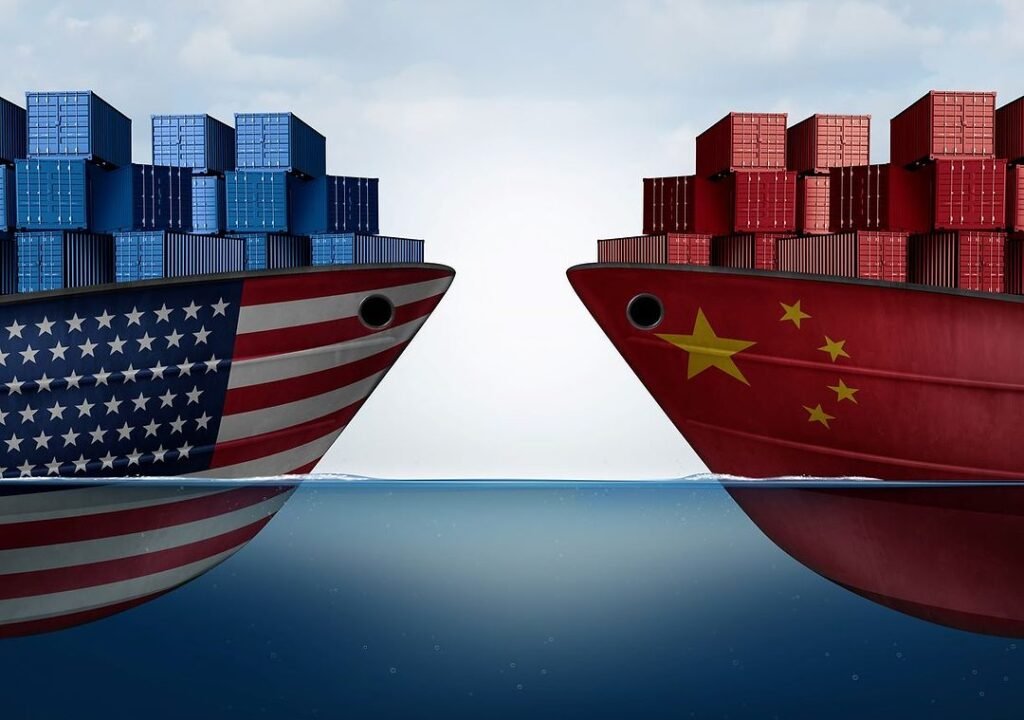U.S. trade war threats are once again shaking the confidence of American businesses. With talks of new tariffs, rising tensions with China and the European Union, and a growing list of retaliatory measures, companies across the U.S. are being forced to prepare for a future that could involve higher costs, limited market access, and supply chain disruptions.
Whether you’re a small manufacturer in Ohio or a large tech firm in California, the impact of global trade tensions is being felt in boardrooms, warehouses, and customer pricing models alike. In this article, we’ll explore how U.S. businesses are grappling with the looming threat of a global trade war, how retaliatory tariffs are reshaping trade dynamics, and what it all means for the future of the American economy.
Understanding the Current U.S. Trade War Landscape
The term “trade war” typically refers to a situation where countries impose tariffs or other barriers on each other’s imports and exports. In today’s context, the primary players include the United States, China, the European Union, and to a lesser extent, countries like India, Brazil, and Canada.
Recent actions—like the U.S. considering new tariffs on Chinese electric vehicles and semiconductor components, and the EU retaliating with duties on American tech and agriculture—are heating things up once more. These threats come at a time when global supply chains are still recovering from the COVID-19 pandemic and geopolitical tensions are running high due to conflicts in Ukraine and the Middle East.
How U.S. Businesses Are Reacting to Trade War Threats
1. Rising Production Costs
Many American businesses rely on raw materials, components, or finished goods from abroad. When tariffs are imposed, the cost of these goods goes up. U.S. companies must either absorb the costs or pass them on to consumers—neither of which is ideal.
Example:
A U.S. auto parts company that sources aluminum from China may face a 25% tariff. This increases the cost per unit and reduces profit margins, forcing the company to either find a new supplier or raise prices.
2. Supply Chain Disruptions
Trade tensions can lead to logistical delays, restrictions on key imports, and a sudden need to reshuffle supply chains.
- Businesses that used to depend on China for manufacturing are now looking to shift to countries like Vietnam, Mexico, or India.
- While diversifying supply chains can reduce long-term risk, it requires time, investment, and trust-building.
3. Retaliatory Tariffs Hit Exports
Retaliatory tariffs are measures taken by other countries in response to U.S. tariffs. This often targets U.S. exports such as agricultural products, machinery, and technology.
Example:
During the previous U.S.-China trade tensions, American farmers lost significant export volume to China due to retaliatory duties on soybeans and pork.
Industries Most Affected by U.S. Trade War Threats

Some sectors are more exposed to global trade disruptions than others. Here are the most vulnerable:
Manufacturing
- Heavy reliance on imported raw materials
- Global assembly and distribution networks
- Price sensitivity in both B2B and B2C segments
Technology and Electronics
- Complex global supply chains
- Semiconductor imports from Asia
- Strong reliance on overseas consumers, especially in Asia and Europe
Agriculture
- Heavily export-driven
- Targets of retaliatory tariffs (e.g., soy, corn, dairy, meat)
- Short product shelf-life and price volatility
Automotive
- Cross-border parts manufacturing (especially NAFTA/USMCA region)
- Sensitive to tariffs on steel, aluminum, and electronic components
- Large investment in international markets
Small Businesses Face the Greatest Challenge
While large corporations may have the resources to adapt, small and medium-sized businesses (SMBs) are especially vulnerable:
- They have fewer supply chain alternatives
- Limited ability to absorb cost increases
- Minimal political influence
- Often rely on single export/import partners
A Real-World Example
Take a small U.S.-based bicycle company that imports gears from Taiwan and sells finished bikes to the EU. If both imports and exports are hit by tariffs, the company’s cost model is destroyed, and margins evaporate.
Policy Uncertainty Hurts Business Confidence
Beyond the tariffs themselves, what’s arguably more damaging is the uncertainty surrounding trade policy:
- Will new tariffs be imposed in the next quarter?
- Will a new administration roll them back or double down?
- Will key partners like Canada, Mexico, or the EU retaliate?
Businesses thrive on predictability. Trade war rhetoric and shifting policies make it hard to plan long-term investments or forecast costs and revenues accurately.
Winners and Losers: Not All Bad News?
While many suffer, some companies or industries may benefit from rising tariffs:
Winners:
- Domestic Manufacturers: If imports become more expensive, some local goods may become more competitive.
- Local Farmers (in select markets): Can benefit from redirected domestic demand due to restricted imports.
Losers:
- Exporters: Especially those dealing with perishable goods or niche global markets.
- Retailers: Dependent on foreign-made products and dealing with price-sensitive consumers.
- Consumers: Higher prices at checkout due to increased import costs.
How Businesses Are Responding Strategically
Forward-thinking companies are adapting by:
- Diversifying supply chains to reduce dependence on one country
- Lobbying and advocacy to influence trade policy
- Automating and reshoring manufacturing processes
- Exploring new export markets that aren’t affected by tariffs
- Forming partnerships within free-trade zones (e.g., USMCA countries)
Investment in Technology
AI and digital supply chain management tools are becoming essential in helping businesses predict, plan, and respond to these disruptions in real time.
The Role of Government and Trade Agreements
Much of the situation lies in the hands of policymakers. The U.S. has several tools and alliances at its disposal:
- USMCA (United States-Mexico-Canada Agreement)
- Indo-Pacific Economic Framework
- Trade and Technology Council with the EU
While these agreements can provide stability, sudden executive orders or geopolitical conflicts can quickly undo progress.
Looking Ahead: What’s Next for U.S. Businesses?
As we move toward the next U.S. presidential election cycle, trade policy is expected to be a hot-button issue again. American companies will need to prepare for multiple scenarios:
- Continued Tariff Pressures: If global tensions rise, more tariffs are likely.
- Political Change: A new administration could mean a reversal or expansion of current policies.
- Geopolitical Shifts: New alliances, global conflicts, or economic downturns could reshape trade patterns overnight.
Conclusion: Time to Rethink Global Strategy
The U.S. trade war threats and retaliatory tariffs are more than political headlines—they’re real risks with real consequences for American businesses. From skyrocketing costs to uncertain futures, companies need to take a proactive approach to survive and thrive in this turbulent environment.
Here’s what U.S. businesses must do moving forward:
- Prioritize supply chain flexibility.
- Build strong relationships with multiple trade partners.
- Invest in digital tools for real-time risk assessment.
- Stay engaged with policymakers and trade associations.
The age of global uncertainty isn’t ending soon. But by understanding the landscape and preparing strategically, U.S. businesses can weather the storm—and even find new opportunities in the chaos.
Read Next – State Anti-ESG Laws Pressuring Asset Managers at the State Level






